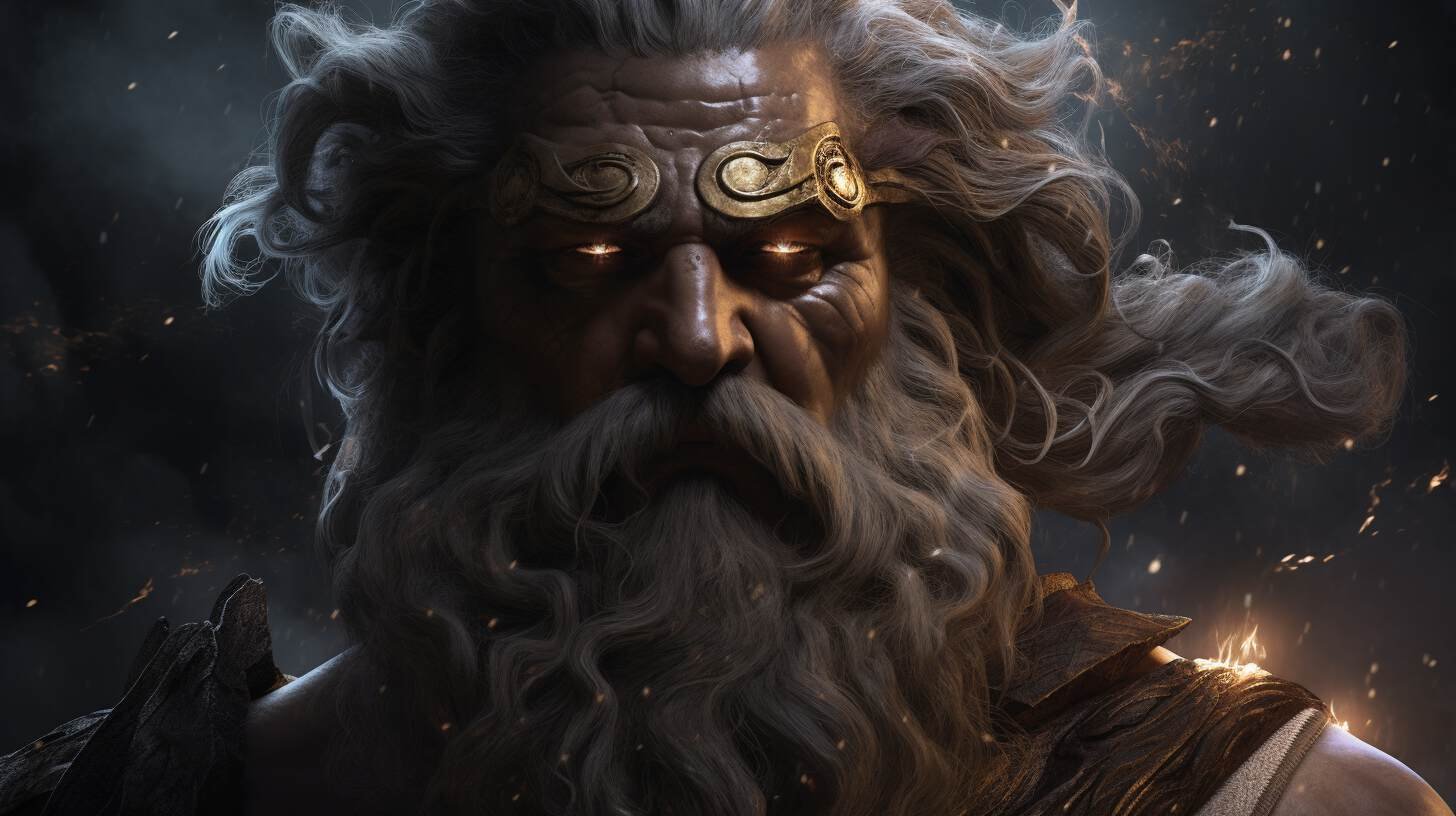The Hyper Masculine Man: What You See Is What You Get
Table of Contents Show
1. What Is Hyper Masculinity In Men?
Hyper masculinity, a term born of sociological discourse, is a magnified embodiment of masculinity, virility, and physical prowess. It is a construct that transcends the ordinary, exaggerating the boundaries of what is considered 'manly.'
2. Hypermasculinity traits?
Three distinct hyper masculine traits define the hypermasculine persona:
a view of violence as a testament to manliness,
a perception of danger as an exhilarating spectacle,
and a callous demeanor towards women coupled with a disdain for emotional displays, often dismissed as feminine.
“Men are like steel. When they lose their temper, they lose their worth.”
3. Hypermasculinity Examples
The hypermasculine archetype is not a figment of academic imagination but a tangible presence in our daily lives. It thrives in the mass media, particularly in action films, as well as our everyday lives.
Consider the stereotypical James Bond, a typical hero, man of few words but decisive actions, who exhibits no emotion as he confronts his adversaries. There is always a female supporting character, who often serves to accentuate his masculine traits. That we recognize as masculinity.
By contrast, recall Cast Away, where Tom Hanks plays the character that survived the horrific and solitary ordeal on a secluded island? We don’t recognize that as a masculine reference.
As far as our everyday lives are concerned, there is the aggressive driver who won't back down, the competitive colleague who must always win.
This demonstration of hypermasculinity not only reflects societal norms but also reinforces and perpetuates them, creating a cycle that is difficult to break.
4. What Causes Hyper Masculinity?
Hypermasculinity is caused by both societal constructs and individual psychological responses.
The first, a sociological lens, examines the role of societal norms and expectations in shaping this extreme form of masculinity.
The second, a psychological viewpoint, delves into the individual's response to perceived threats to their masculine identity.
Together, these perspectives offer a nuanced understanding of the factors that contribute to the rise of hypermasculinity in contemporary society.
Sociological Causes
The roots of hypermasculinity are deeply embedded in the social fabric. Society, through its norms, expectations and evolution, is playing a significant role in shaping hypermasculinity.
Originally, traditional gender roles evolved naturally within societies throughout our existence. Like any other social system, it had its flaws, but nevertheless anchored societies with gender identities that fit seamlessly. While masculinity exhibited nature, femininity enabled nurture.
Today, a war on gender roles is being forced on societies which is perpetually challenging a natural state of society. Masculinity and femininity are both being brute forced out of shape into something that is no longer discernible.
Due to this relentless war, a defiance has emerged in the form of hypermasculinity, where men who once just exhibited manliness without any conscious endeavour, now over express it until it resembles a caricature.
This extreme exhibition is further reinforced on social media and popular culture. Especially on social media, there are men excessively showcasing their bodies, wealth, achievements as a sign of masculinity. While masculinity as it really existed before was based solely on competence.
Psychological Causes
From a psychological perspective, hypermasculinity can be seen as a response to perceived threats to one's masculine identity. Men who feel that their masculinity is being challenged may overcompensate by exhibiting hyper masculine behaviours.
This phenomenon, known as "masculinity threat," can lead to aggression, risk-taking, and other hyper masculine behaviours.
Furthermore, research suggests that certain personality traits, such as narcissism and competitiveness, may be associated with hypermasculinity. Men with these traits may be more likely to adopt hyper masculine behaviors as a way of asserting their dominance and superiority.
5. What Are The Characteristics of Hyper Masculine People?
Hypermasculinity characteristics can be explained in form of the physical features, which include over emphasis on body building and the behavioural features in form of an exaggerated demonstration of strength, dominance, and emotional restraint.
The Physical: What Are Hyper Masculine Features?
Hypermasculine physical features are often characterized by traits that signal strength and dominance. These include a greater height, lower body adiposity, and a greater shoulder-to-waist ratio, indicating optimal levels of upper body muscularity.
In this day and age where everything is exaggerated, even the masculine features are meticulously cultivated by society and individuals. Men spend exorbitant amounts of time in the gym sculpting their bodies under the guise of fitness and achievement, while passing equal amounts of time on aesthetics.
“The problem with the world is that the intelligent people are full of doubts, while the stupid ones are full of confidence.”
Such has been the emphasis on exhibiting masculinity where men fearing that masculinity is receding have to loudly exhibit it by flaunting physical attributes, rather than let competencies speak for themselves.
The Behavioural: Actions that Speak Louder than Words
Hyper masculine behaviours often revolve around exaggerated demonstration of strength, dominance, and emotional restraint. These behaviors can manifest in various ways, such as aggression, risk-taking, and a lack of emotion.
Furthermore, hyper masculine individuals often exhibit a competitive nature and a desire to assert dominance over others. This can manifest in various social contexts, such as in the workplace or in interpersonal relationships.
Ironically, one can see all of these behaviors crystallize on social media. Any man who has to announce that he is a man, in any form or manner is hyper masculine.
6. What is the difference between Hyper Masculinity Vs toxic masculinity
While both toxic and hypermasculinity are characterized by an exaggerated adherence to traditional masculine norms, they are not identical. Hypermasculinity refers to an overemphasis on traditional masculinity while toxic masculinity refers to the harmful subset of hypermasculine behaviors.
In essence, toxic masculinity includes behaviors that harm others, such as violence and aggression, as well as behaviors that harm the individual himself, such as suppressing emotions or refusing to seek help when needed.
Thus, while all toxic masculinity can be considered hypermasculine, not all hypermasculinity is toxic. It is the harmful or destructive behaviours that cross the line from hypermasculinity into toxicity.
How Each Affects Men and Society
The impacts of both toxic and hypermasculinity are far-reaching and profound. On an individual level, these behaviors can lead to poor mental health, substance abuse, and increased risk-taking.
On a societal level, toxic and hyper masculine behaviors can contribute to violence, sexism, and homophobia. Moreover, these behaviors can perpetuate harmful gender norms, creating a cycle that is difficult to break.
7. What is the Opposite of Hyper Masculinity?
Masculinity, on its own, is in fact the antithesis of hypermasculinity. Masculinity within itself has the correct dose of masculine and feminine traits needed to navigate the world holistically. Things break down when we decide to experiment and go out of our ways to brute force nature’s formula out of its connectivity.
It is essential to understand that masculinity is not the absence of femininity, or vice versa. Both can and have coexisted within the same individual, since the dawn of mankind. The rigid dichotomy between masculinity and femininity that society is intent on drawing and debating on is a societal construct, and not a reality.
Men have always had both nature and nurture programmed within them, and one can draw from infinite examples to reference such natural behavior. From the fathers who carefully prepare pancakes for their children in the morning, to those same fathers who then put their lives on line as first responders, doctors, lawyers, etc.
Men have always done this. So why do we have to reform the role which always existed as a whole?
“A handsome man or woman is such, not for that the world says so, but for that in prudence, in manners, and the use of reason, they are so. There is no beauty like that which was after the mind’s liking, a handsome man or woman is therefore thus defined; Handsome is that handsome does.”
8. How Does Hypermasculinity Affect Men?
Hypermasculinity, has profound implications on men's personal and social lives. On a personal level, hypermasculine norms can lead to emotional suppression while at a social level it impacts relationships and workplace dynamics.
Personal Consequences: Emotional & psychological health
Hypermasculinity, with its over emphasis on emotional restraint and dominance, can take a significant toll on men's emotional and psychological health. The pressure to conform to hyper masculine norms can lead to emotional suppression, which in turn can contribute to a range of mental health issues, including depression, anxiety, and substance abuse.
Moreover, the hypermasculine ideal of self-reliance can deter men from seeking help for mental health issues, exacerbating these problems. The fear of appearing weak or unmanly can prevent men from reaching out to others, even when they are in dire need of support.
Social Consequences: Relationships, Work, and Beyond
The impacts of hypermasculinity extend beyond the individual and can have far-reaching social consequences. In relationships, hypermasculine behaviors such as aggression and emotional detachment can create conflict and hinder intimacy.
In the workplace, hypermasculine norms can contribute to a competitive, aggressive culture that is detrimental to teamwork and cooperation. Furthermore, these norms can marginalize those who do not conform to them, creating an environment that is hostile to diversity.
9. How to Be a Hyper Masculine Man? Or Not
While becoming a masculine man is a lifelong process, which involves undergoing hardships, responsibilities and sacrifices for others, becoming a hyper masculine man is literally an overnight transformation.
To become a hyper masculine man simply involves embracing and exaggerating traditional masculine traits. This may involve physical changes, such as building muscle mass, exhibiting excessively and adopting a dominant posture. All can be achieved with the snap of a finger.
At the end of the day becoming hypermasculine is about becoming a caricature of masculinity. It's about embodying certain masculine traits to an extreme degree without the essence.
10. Is Hypermasculinity Good?
While hypermasculinity can confer certain flaky advantages, such as increased confidence and false assertiveness, it has numerous downsides. The pressure to conform to hyper masculine norms can lead to emotional suppression, which can contribute to mental health issues.
Hypermasculine behaviors can also lead to conflict in relationships and can create a hostile environment in the workplace. Therefore, it's important for men to consider that embracing hypermasculinity is nothing but an act.
There are many ways to be a man, and hypermasculinity is not one of them.
11. Hypermasculinity in Media
Hyper masculinity is vividly portrayed and often glorified in media, particularly in the film industry. Action heroes, with their chiselled bodies and indomitable spirits, often embody the hyper masculine ideal.
Consider the action heroes over the years. Whether it is the 1980s, with the likes of Sylvester Stallone and Arnold Schwarzenegger, who dominated the silver screen with their muscular physiques and fearless personas or the present day modern heroes like Dwayne Johnson, masculinity continues to perpetuate in its hyper format.
Real-life narratives of hyper masculinity are also not hard to find. They existed initially in various forms, from the machismo culture in certain societies to the aggressive competitiveness in corporate boardrooms.
Today however, hypermasculinity has truly become global. Just open any social media, Instagram, LinkedIn etc and it will be instantly visible.
12. The Conclusion
Hypermasculinity, an exaggerated adherence to traditional masculine norms, is a complex and multifaceted concept. It encompasses physical traits such as muscularity and dominance, as well as behavioral traits such as aggression, risk-taking, and emotional stoicism.
Hypermasculinity is now deeply ingrained in our society, perpetuated by media portrayals and societal expectations. As masculinity in its original form fades away, hypermasculinity has and will take its place as the last act of defiance.
Soon this form of exaggerated masculinity will become the only memory societies will have of masculinity as it ever existed.



























